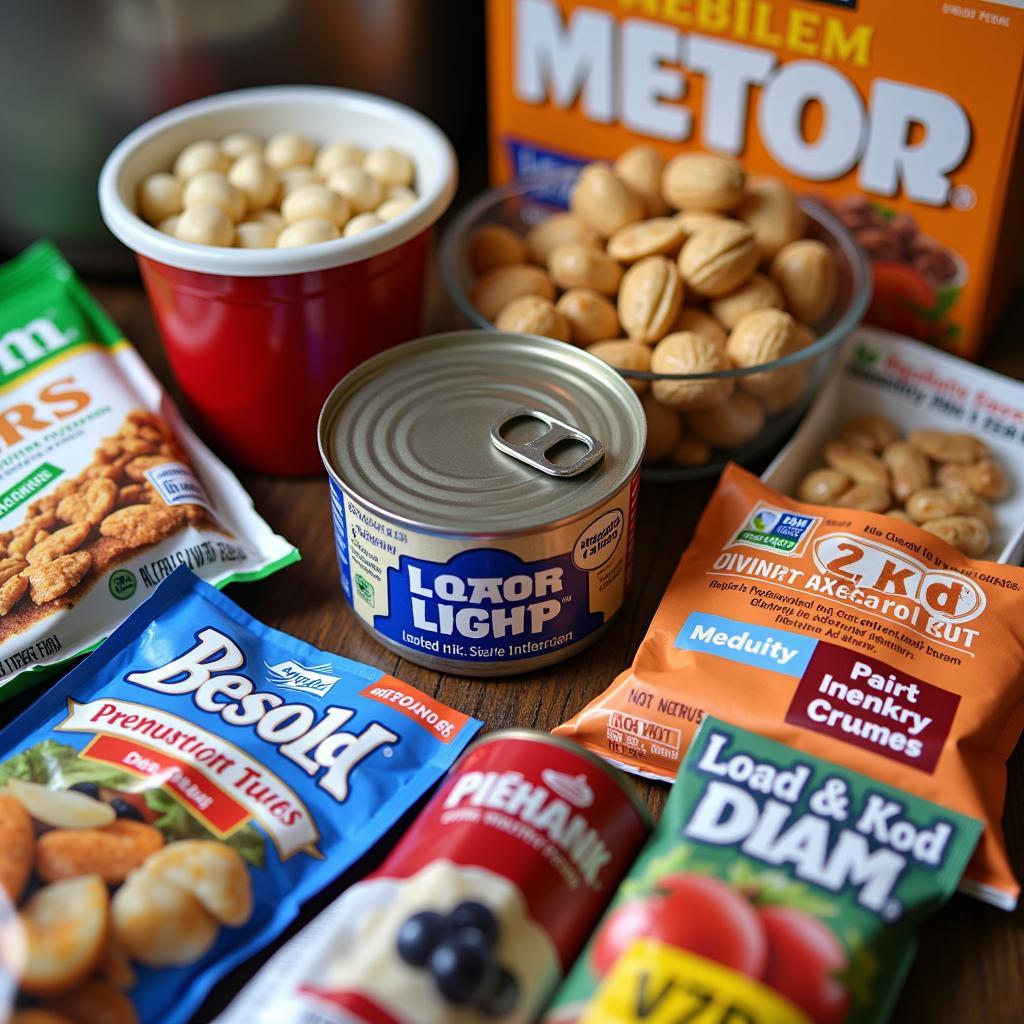A 72 Hour Kit Food supply is not just about filling a bag with snacks; it’s about ensuring you have sustenance and peace of mind during an emergency. Choosing the right food for your 72 hour kit requires careful planning and consideration of various factors. This guide will equip you with the knowledge to build a kit that meets your needs and keeps you nourished when it matters most. 72 hour emergency food kit
Why is a 72 Hour Kit Important?
Emergencies can strike unexpectedly, disrupting daily life and access to essential resources like food and water. A well-stocked 72 hour kit, also known as a “go-bag,” bridges the gap between the onset of an emergency and the arrival of help or the restoration of services. It provides you with the necessary supplies to sustain yourself for at least three days.
What kind of food should you pack in a 72-hour kit? Ideally, you’ll want non-perishable, nutrient-rich options. Think about items that are lightweight, easy to prepare, and require minimal water.
Choosing the Right 72 Hour Kit Food
Building a 72 hour kit food supply involves more than just grabbing a few cans from your pantry. Consider these factors:
- Calorie Needs: Aim for at least 2,000 calories per day to maintain energy levels.
- Shelf Life: Choose foods with a long shelf life, preferably those that can last for several years.
- Dietary Restrictions: If you have allergies or specific dietary needs, ensure your kit reflects these.
- Ease of Preparation: Opt for foods that require minimal or no cooking, especially if access to a heat source is uncertain.
- Variety: Include a variety of foods to avoid taste fatigue and ensure a balanced nutrient intake.
 Non-Perishable Food Options for a 72 Hour Kit
Non-Perishable Food Options for a 72 Hour Kit
Don’t forget to include essential tools like a can opener and utensils. Even the best canned food is useless without a way to open it!
72 Hour Kit Food Ideas
Here are some ideas for your 72 hour kit food:
- Canned Goods: Tuna, chicken, beans, vegetables, and fruits are great sources of protein and nutrients.
- Dried Foods: Dried fruits, nuts, and jerky provide essential nutrients and have a long shelf life. 72 hour survival food kit
- Energy Bars: A quick and easy source of calories and nutrients.
- Freeze-Dried Meals: Lightweight and easy to prepare by adding water.
- Powdered Drinks: Provide essential electrolytes and can be mixed with water.
What are the best emergency food containers? Consider using airtight containers to keep your food fresh and protected from moisture and pests. emergency food containers
Building Your 72 Hour Food Kit: A Step-by-Step Guide
- Assess your needs: Consider your dietary requirements, activity level, and the potential climate.
- Create a list: Make a detailed list of the food items you plan to include.
- Check expiration dates: Ensure all items have a long shelf life and rotate them regularly. 72 hour food kits
- Pack and organize: Store your food in airtight containers and label everything clearly.
- Store in a cool, dry place: Keep your 72 hour kit in an easily accessible location.
“A 72-hour kit is an investment in your safety and well-being,” says Sarah Johnson, a certified emergency preparedness specialist. “It’s not about being paranoid; it’s about being prepared.”
Remember, building a 72 hour kit is a process, not a one-time event. Regularly review and replenish your supplies to ensure they are up-to-date and ready for any emergency.
Conclusion
Building a 72 hour kit food supply is a crucial step in preparing for unforeseen emergencies. By carefully selecting nutritious, non-perishable foods and organizing them effectively, you’ll be well-equipped to face any challenge. 72-hour survival food kit Don’t wait until disaster strikes; take action now to ensure your safety and well-being.
FAQs
- How often should I rotate my 72 hour kit food? Ideally, every six months to a year.
- What are the best non-perishable foods for a 72 hour kit? Canned goods, dried foods, and freeze-dried meals are excellent choices.
- How much water should I include in my 72 hour kit? Aim for at least one gallon per person per day.
- Where should I store my 72 hour kit? Keep it in a cool, dry, and easily accessible location.
- What other items should I include in my 72 hour kit besides food? A first-aid kit, flashlight, radio, and extra batteries are essential.
“Having a 72-hour kit provides not just physical sustenance, but also immense peace of mind,” adds David Lee, a wilderness survival expert. “Knowing you have a plan and the resources to cope with unexpected events can significantly reduce stress and anxiety in a crisis.”
Do you have any other questions about building a 72-hour kit? For further information, check out our articles on emergency food containers and 72-hour survival food kits.
When you need assistance, please contact us at Phone Number: 02437655121, Email: minacones@gmail.com or visit us at 3PGH+8R9, ĐT70A, thon Trung, Bac Tu Liem, Ha Noi, Viet Nam. We have a 24/7 customer service team.